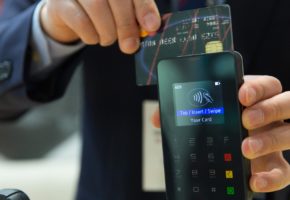
Born between 1946 and 1964, baby boomers are no longer the most populous generation in the U.S. That distinction belongs to the children of baby boomers, the millennial generation, born between 1982 and 2004. However, while baby boomers don’t hold the top spot on the generation population chart, the group is nonetheless a target of many eCommerce companies promoting an online business.
Baby Boomers as a Target Audience
Brandon Gaille of Gaille Media reports some key financial statistics about baby boomers that demonstrate why so companies consider the generation a key marketing demographic.
- Baby Boomers have an average annual disposable income of $24,000.
- Baby Boomers outspend other generations by an estimated $400 billion each year on consumer goods and services.
- In 2009, spending by the 116 million U.S. consumers age 50 and older was $2.9 trillion, which is up 45% in the past 10 years.
- Baby Boomers outspend their children and grandchildren nearly 2 to 1.
So, baby boomers have spending power. However, as with other generation segments, they must be motivated to open their purse and make a purchase. How can companies promoting an online business accomplish this? At the most basic level, it all comes down to marketing.
Five-Step Online Marketing Process
To reach baby boomers, online businesses must segment the generation, and deliver the right marketing messages, to the right audience segments, at the right time, using the right communication channels. Let’s take a closer look at each step in this five-step process.
1. Audience Segmentation
 Audience segments often appear homogeneous on a macro level, but they can be segmented in several ways to help refine online marketing campaigns. Examples of crucial segmentation factors include gender, age, marital status, income level, and retirement status, to name just a few.
Audience segments often appear homogeneous on a macro level, but they can be segmented in several ways to help refine online marketing campaigns. Examples of crucial segmentation factors include gender, age, marital status, income level, and retirement status, to name just a few.
Separating baby boomers into different segments helps you refine your marketing messages, and achieve a greater response from each segment compared to using a “batch and blast” technique that sends the same messages to the whole audience. The batch and blast technique can work well if your audience is truly homogenous, but this is rare among large demographics.
2. Marketing Messages
Now that the target audience is segmented, you can develop marketing messages that target each segment. For example, if you’re a marketing a line of luxury sedans, you’d probably get beat results marketing it to middle age baby boomers who earn near the top of their pay scale. This, instead of marketing to older, retired baby boomers who live on a fixed income, and retain much of their liquidity and credit line as buffers to large, unexpected expenses.
4. Timelines of Messages
The time when you send marketing messages to audience segments can have a major impact on whether they take the action you want (e.g. leaving contact information or making a purchase). Let’s use the line of luxury sedans as an example once more.
Baby boomers know retirement is on the horizon, and they want to save money for it. Marketing cars to them to the end of the year, when dealers slash prices on last year’s models to make room for this year’s, tells them now’s a good time to get a great deal on a fantastic car.
Let’s say that a baby boomer has always wanted a Ford Mustang. If he or she knows the model can be purchased on sale for the standard price of a well-equipped Ford Taurus, that could be enough to seal the deal, especially if some attractive dealership rebates are in play.
5. Communication Channels
 This part of the marketing effort for baby boomers is where non-marketing professionals often feel flummoxed. To varying degrees, baby boomers use of all of the communication channels that other generations do: TV, email, social media, mobile internet, etc. The key is to understand which segments use which communication channels the most.
This part of the marketing effort for baby boomers is where non-marketing professionals often feel flummoxed. To varying degrees, baby boomers use of all of the communication channels that other generations do: TV, email, social media, mobile internet, etc. The key is to understand which segments use which communication channels the most.
Based on a recent report from MarketingSherpa — a research firm “specializing in tracking what works in all aspects of marketing (and what does not).” — below are the most preferred business communication channels for baby boomers by age segment, according to baby boomers.
- 52-54 – This segment most prefers to receive information through email.
- 55-64 – This segment most prefers to acquire information through email, too.
- 65-70 – This segment most prefers to get information through mail, closely followed by USPS mail.
So, what type(s) of marketing campaigns should be aimed at these segments to transition them into customers? Email campaigns are an obvious choice, as every baby boomer age segment embraces email. At the upper end of the age spectrum, we see that people 65-70 are a bit fonder of paper mail than email. For this segment, you could combine an email campaign with an offline direct mail campaign. Information shows up in the inbox and the mailbox.
Need Help Targeting Baby Boomers?
If so, part of promoting an online business to this generation involves considering the information above, as you create an online marketing effort that may be flanked by mail communications. An experienced marketing agency can help by skillfully segmenting the target audience and delivering the right marketing messages, to the right audience segments, at the right time, using the right communication channels.
If a part of your marketing effort for baby boomers involves building a custom eCommerce website, Allied Wallet — a world leading merchant service provider (MSP) — can provide affordable, reliable transaction rates on all electronic purchases that pass through the site’s payment gateway, regardless of your business location of preferred method of currency. Our processing solutions are truly diverse, supporting 164 currencies across 196 countries.
Schedule a Free Consultation
To learn more about your options with us, please call us in the U.S. at (888) 255-1137, in the U.K. at +44 203 318 8334, or use the contact form on our website. We look forward to assisting you with promoting an online business that captures the business of baby boomers and drives revenue. Contact us today to schedule a free consultation!






